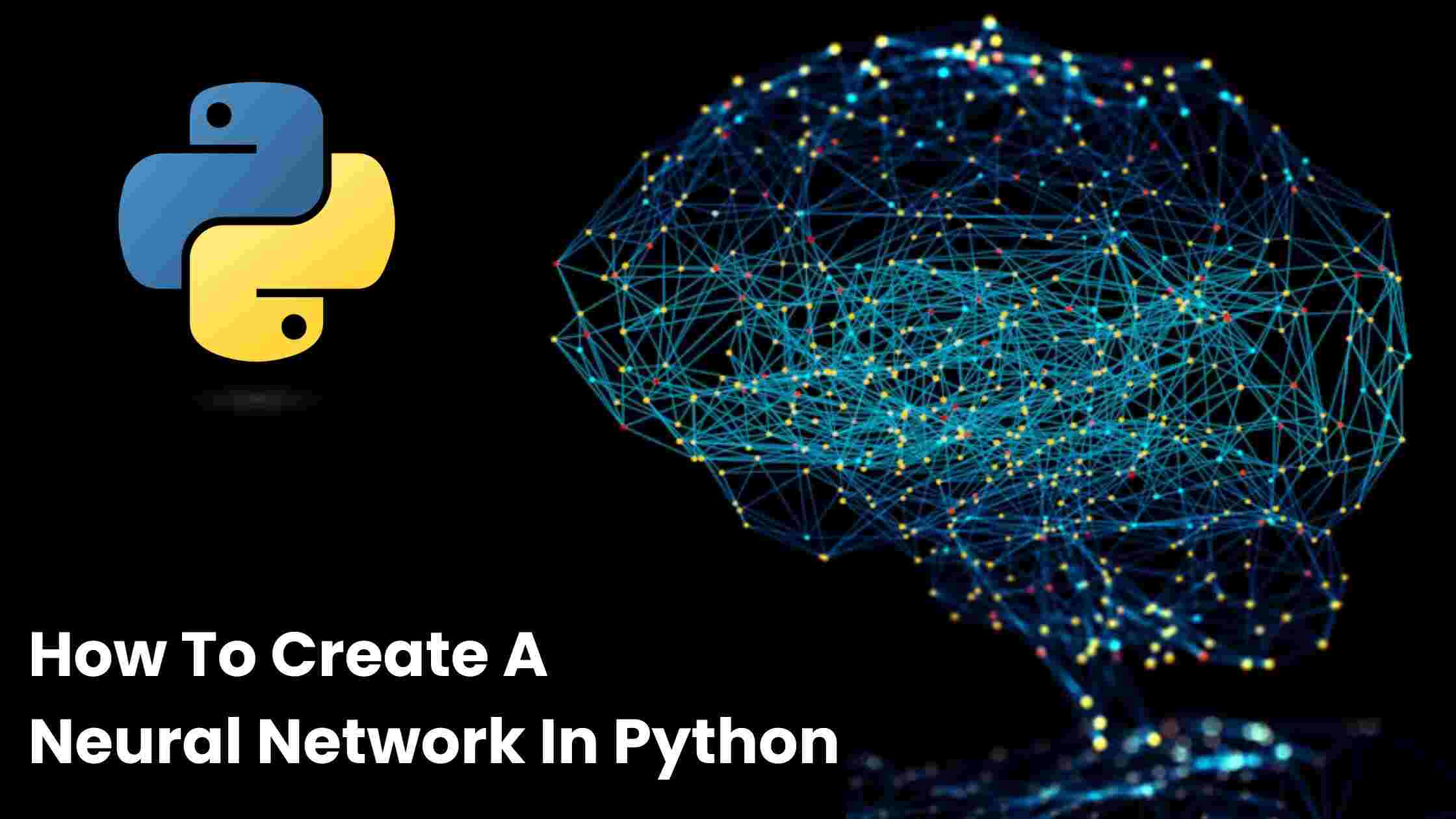Ever wondered how to create a neural network in Python? Don’t worry, it’s not as scary as it sounds! In this beginner-friendly guide, I’ll walk you through the process step by step.
Neural networks might seem complex but think of them like a digital brain that can learn patterns and make decisions. Just like how we learn from experience, these networks learn from data.
Python makes building neural networks easier than ever. Whether you’re a student, hobbyist, or aspiring data scientist, this guide will help you create your first neural network without getting lost in complicated math or code.
Ready to start this exciting journey? Let’s dive in!
Table of Contents
- Prerequisites: What You Need Before Building Your First Neural Network
- Understanding Neural Networks
- Setting Up Your Development Environment
- Building Your First Neural Network: Your First Steps Into Neural Networks
- Step-by-Step Implementation: Training Your Neural Network
- Testing Your Neural Network
- FAQ’s
- Conclusion
Prerequisites: What You Need Before Building Your First Neural Network
Before we jump into creating our neural network, let’s make sure you have everything ready. Don’t worry – the setup is pretty straightforward!
Basic Requirements:
- Python 3.7 or newer installed on your computer
- Basic understanding of Python (if you can write simple loops and functions, you’re good to go!)
- A code editor like VS Code or PyCharm (even a simple one will work)
Required Libraries:
- NumPy: This helps us work with numbers and arrays easily
- Matplotlib: We’ll use this to create simple graphs
- Pandas: Helpful for handling our data
To install these libraries, just open your command prompt or terminal and type:
pip install numpy matplotlib pandas
Don’t have Python installed yet? Head over to Python’s official website (python.org) and download the latest version. It’s as simple as downloading and installing any other program!
Remember: You don’t need to be a Python expert to follow along. If you understand basic concepts like variables, loops, and functions, you’re all set to start this exciting journey!
Understanding Neural Networks

Think of a neural network as a tiny digital brain. Just as our brain has neurons that help us learn, a neural network has artificial neurons that work together to learn patterns.
These neurons are organized in layers. The first layer takes in data (like numbers or images), the middle layers process this information, and the final layer gives us the answer we’re looking for.
Each neuron connects to others, just like a spider’s web, passing information back and forth until it learns to make good decisions.
Setting Up Your Development Environment
Let’s set up everything you need to start coding your neural network. I’ll keep it super simple!
First, Create Your Project Folder:
- Make a new folder on your computer (name it something like ‘my_neural_network’)
- Open this folder in your favorite code editor
Install Required Libraries:
Open your terminal or command prompt and type these commands one by one:
pip install numpy
pip install matplotlib
pip install pandasCreate Your First Python File:
- In your project folder, create a new file called ‘neural_network.py’
- Add these basic import statements at the top of your file:
import numpy as np
import matplotlib.pyplot as plt
import pandas as pdTest Your Setup:
Copy and run this simple code to make sure everything works:
python("Neural Network Project Setup Complete!")
print("NumPy version:", np.__version__)Quick Tip: If you see version numbers printed without any errors, congratulations! Your environment is ready to go.
That’s it! You’ve now got everything set up and ready to build your first neural network. Nice work! Let’s move on to the fun part, actually building our network.
Building Your First Neural Network: Your First Steps Into Neural Networks
Let’s create a simple neural network that can learn basic patterns. We’ll break this down into small, easy-to-follow steps.
First Step: Create the Basic Structure
class SimpleNeuralNetwork:
def __init__(self, input_size):
# This is like the brain's initial setup
self.weights = np.random.randn(input_size, 1) # Random starting weights
self.bias = np.random.randn(1) # Random starting biasSecond Step: Add the Activation Function
def sigmoid(self, x):
# This function helps the network make decisions
return 1 / (1 + np.exp(-x))Third Step: Create the Prediction Function
def forward(self, inputs):
# This is how our network thinks
total = np.dot(inputs, self.weights) + self.bias
return self.sigmoid(total)Let’s Try It Out:
# Create a neural network with 2 inputs
my_network = SimpleNeuralNetwork(2)
# Test it with some sample data
test_input = np.array([1, 0])
prediction = my_network.forward(test_input)
print("Network's prediction:", prediction)What’s Happening Here?
- We created a simple network that can take inputs and make predictions
- The ‘weights’ are like the network’s memory
- The ‘bias’ helps the network make better decisions
- The ‘sigmoid’ function helps turn complex numbers into simple yes/no decisions
This is a basic version, but it’s already a working neural network! Think of it like teaching a baby to recognize patterns – it starts simple and gets better with practice.
Quick Tip: Don’t worry if your predictions look random right now. That’s normal! In the next section, we’ll learn how to train our network to make better predictions.
Want to experiment? Try changing the input values and see how the predictions change. There’s no wrong way to explore here!
Step-by-Step Implementation: Training Your Neural Network
Now let’s teach our neural network how to actually learn! We’ll add the training ability to our previous code.
1. First, Add Training Functions
class SimpleNeuralNetwork:
# Previous code remains the same...
def train(self, training_inputs, training_outputs, learning_rate=0.1):
# This is how our network learns
prediction = self.forward(training_inputs)
error = training_outputs - prediction
# Update weights and bias to learn from mistakes
adjustment = learning_rate * error
self.weights += training_inputs.reshape(-1, 1) * adjustment
self.bias += adjustment2. Let’s Create Training Data
# Example: Teaching the network to understand the AND logic
training_data = np.array([
[0, 0], # Input 1
[0, 1], # Input 2
[1, 0], # Input 3
[1, 1] # Input 4
])
# What we want the network to learn (AND logic)
expected_outputs = np.array([
[0], # 0 AND 0 = 0
[0], # 0 AND 1 = 0
[0], # 1 AND 0 = 0
[1] # 1 AND 1 = 1
])3. Train The Network
# Create our network
network = SimpleNeuralNetwork(2)
# Train it 1000 times
for i in range(1000):
# Train on each example
for j in range(len(training_data)):
network.train(training_data[j], expected_outputs[j])4. Test Your Trained Network
pythonCopy# Let's see what it learned!
print("Testing our trained network:")
for test_input in training_data:
result = network.forward(test_input)
print(f"Input: {test_input} -> Output: {result[0]:.3f}")What’s Really Happening?
- The network looks at training examples
- It makes a guess (prediction)
- It checks if the guess was right
- It adjusts its weights and bias to do better next time
- This process repeats many times until it learns
Simple Tips:
- Start with small datasets first
- Check your results after training
- If it’s not learning well, try:
- Training for more rounds
- Adjusting the learning rate
- Adding more training examples
Remember: Just like humans, neural networks learn through practice. The more examples you give it, the better it gets!
Testing Your Neural Network
Let’s check if your neural network is working correctly. We’ll use a simple example to test it and see the results.
Create Test Cases:
# Test data for the AND logic gate
test_cases = [
[0, 0], # Should give close to 0
[0, 1], # Should give close to 0
[1, 0], # Should give close to 0
[1, 1] # Should give close to 1
]
# Run our tests
for test in test_cases:
result = network.forward(np.array(test))
print(f"Input: {test}")
print(f"Output: {result[0]:.4f}")
print("-" * 20)Visualize The Results:
# Create a simple graph to show results
plt.figure(figsize=(8, 6))
for test in test_cases:
result = network.forward(np.array(test))
plt.scatter(test[0], test[1], c='blue', s=100)
plt.text(test[0], test[1], f'{result[0]:.2f}')
plt.title("Neural Network Test Results")
plt.xlabel("Input 1")
plt.ylabel("Input 2")
plt.grid(True)
plt.show()How To Know If It’s Working:
- For AND logic:
- [0,0] should give a number close to 0
- [0,1] should give a number close to 0
- [1,0] should give a number close to 0
- [1,1] should give a number close to 1
Quick Tips:
- If the results aren’t good, try training for more rounds
- Check if all your test cases are working
- Look for patterns in wrong answers
- Save your working model for later use
Remember: No neural network is perfect! Even a well-trained network might be off by a little bit, and that’s okay.
FAQ’s
Yes! Python is excellent for neural networks because it has many AI libraries, simple syntax, and great community support. It’s the most popular language among data scientists and AI developers.
While Python is the foundation, you’ll need libraries like NumPy, TensorFlow, or PyTorch. But don’t worry, these libraries are free and easy to install through Python’s package manager.
Not really! Building basic neural networks is straightforward with Python. While complex networks need more knowledge, starting with simple ones (like we showed) is quite manageable for beginners.
Popular libraries include TensorFlow, PyTorch, and Keras. For beginners, Keras is often recommended as it’s more user-friendly. NumPy is also essential for basic neural network operations.
Conclusion
In conclusion, learning how to create a neural network in Python isn’t as difficult as it might seem! We’ve covered everything from basic setup to testing your own network. Remember, every expert started exactly where you are now. Start small, practice with simple examples, and gradually build up to more complex networks. The key is to experiment and learn from each attempt. Soon, you’ll be creating neural networks that can solve real-world problems!

